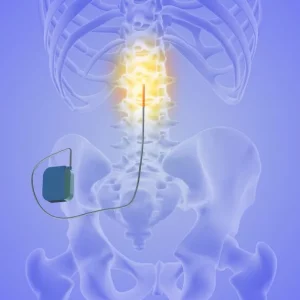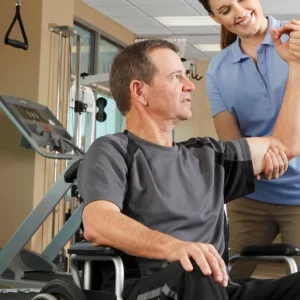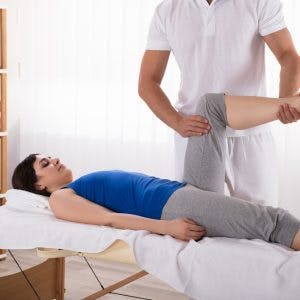Weight loss after spinal cord injury is common. It often occurs (at least initially) because the body experiences changes in body composition due to reduced physical activity. While muscle mass and bone density decrease, fat can increase when diet is not adjusted after SCI. As a result, weight gain can also occur.
This article will explore factors that can contribute to changes in weight after SCI and how to effectively manage your weight.
Causes of Weight Loss After Spinal Cord Injury
Weight loss after spinal cord injury is primarily caused by decreased physical activity leading to muscle atrophy. Because SCIs can cause loss of motor control and sensation below the level of injury, individuals may not be able to move around as frequently as they did before their injury.
Our bodies are incredibly adaptable. When you don’t regularly bear weight and move around, your bone density and muscle mass start to deteriorate from nonuse, which causes weight loss after spinal cord injury.
Many factors can affect weight after SCI, including the severity and location of your injury. For example, someone with a higher-level injury will likely experience greater changes in body composition than someone with a lower-level injury because more areas of the body are affected.
Generally, the higher one’s level of injury, the more challenging it becomes to stay active, and the greater the risk of osteoporosis (reduced bone density) or muscle atrophy (reduced muscle mass).
Understanding Weight Gain After SCI

While many individuals with spinal cord injuries initially experience weight loss, many are also susceptible to weight gain later on in their recovery. This occurs because individuals continue to eat the same amount of food that they did when they were more physically active. As a result, they consume more calories than they expend, leading to weight gain.
To maintain a healthy weight range, individuals should adjust their daily calorie intake. The Spinal Cord Injury Nutrition Practice Guideline recommends: that individuals with paraplegia (weakness or paralysis of the trunk and/or legs) consume about 28 calories per kilogram of body weight. In contrast, those with quadriplegia (weakness or paralysis in both the upper and lower extremities) consume about 22 calories per kilogram of body weight.
It’s also important to understand that these are just general guidelines. Nutritional needs will vary depending on the individual, their lifestyle, and the severity of their spinal cord injury. Speak with your doctor or a dietician to determine an ideal weight range and calorie intake for you.
Now that you understand how a spinal cord injury can cause changes in weight, let’s discuss weight management tips.
How to Lose Weight After Spinal Cord Injury

Weight management after spinal cord injury should focus on finding a balance between diet and physical activity.
Listed below are tips that can help you achieve that balance:
- Eat More Nutrient Dense Foods: Everyone should be eating plenty of fruits and vegetables, and if your doctor recommends losing weight, then focusing on these foods can help you feel full.
- Practice Portion Control: Even if you’re eating healthy foods, eating too much can cause weight gain. Try to be mindful of how much you’re eating.
- Do Not Skip Meals: Going too long without eating can cause your hunger to build and increase your likelihood to overeat.
- Practice Passive Range of Motion Exercises: Passive ROM exercises don’t require energy exertion, which makes them ideal for individuals with severe weakness or paralysis. Instead, a therapist or caregiver moves the individual’s body through various movements to promote circulation and resting metabolic rate.
- Explore Exercises and Activities: Physical activity does not have to be strenuous to be effective. Making an effort to move around frequently throughout the day can significantly improve your overall health. Explore activities and exercises you enjoy and make them part of your daily routine for long-term recovery.
- Drink Enough Water: Staying hydrated helps improve energy levels, digestion, and motivation.
- Focus on How You Feel: Ultimately, you want to focus on how you feel. If counting calories or tracking activity is too stressful, be intuitive and listen to your body. Follow natural hunger cues and make an effort to move around throughout the day. Assess how you feel and then adjust as necessary.
Weight management after spinal cord injury can be challenging. What works for one person won’t necessarily work for another. Therefore, be open to trial and error. Spinal cord injury is a lifelong condition, so it’s essential to find changes you can stick to long-term.
Changes in Body Composition After Spinal Cord Injury: Key Points
Don’t be too hard on yourself if you gain or lose weight after a spinal cord injury. Life after spinal cord injury can require a lot of adjustments, and everybody reacts to stress differently. Changes in body composition are generally expected when individuals experience widespread paralysis.
Recovery is a long process that has its fair share of ups and downs. Try to focus less on the number on the scale and more on establishing healthy habits.










